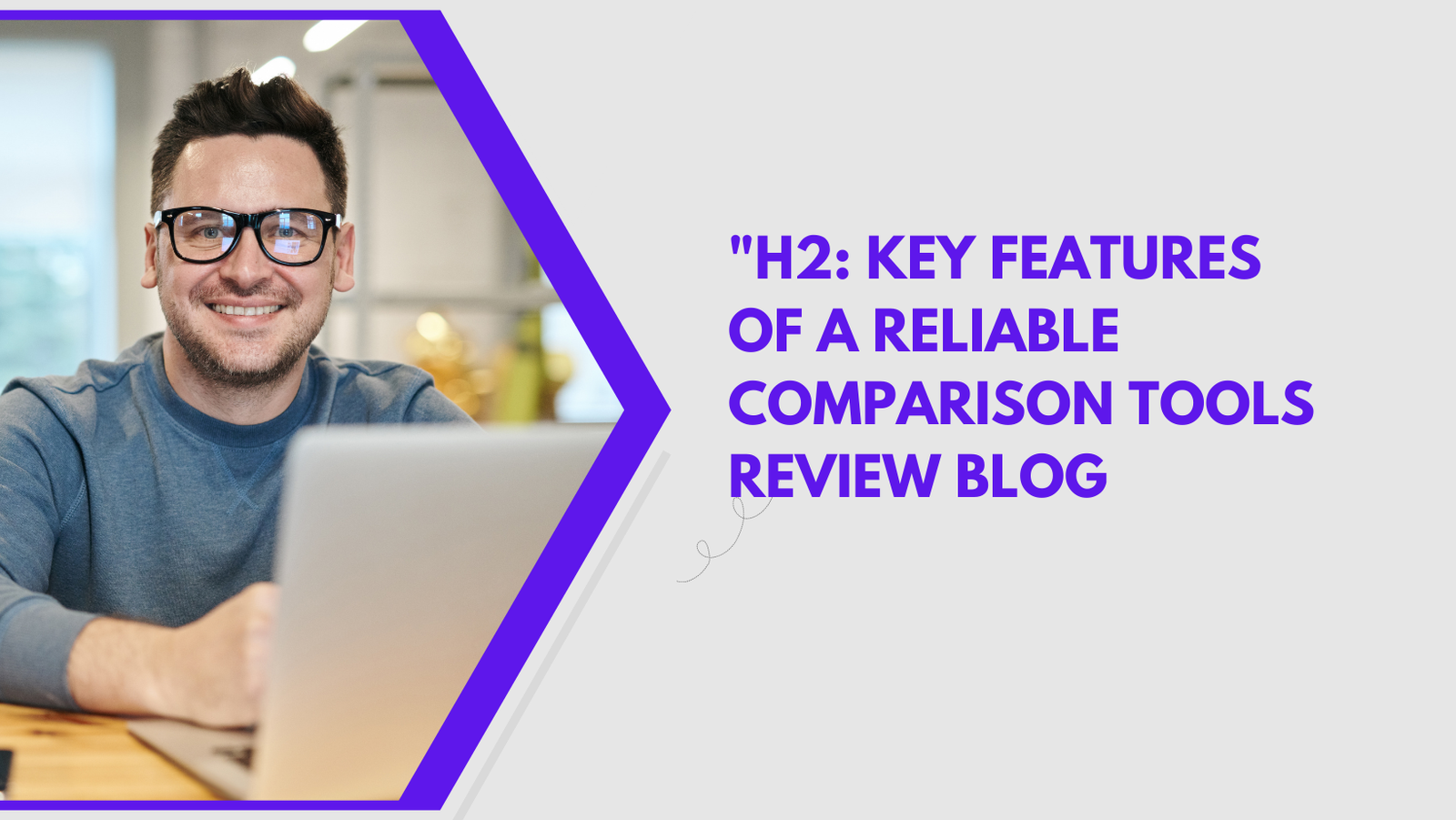“Navigate your purchasing decisions with confidence using our comprehensive comparison tools review blog. Discover expert insights, Comparison tools review blogdetailed evaluations, and essential tips to make smarter choices tailored to your needs.”
Table of Contents
H1: How to Select the Best Comparison Tools Review Blog for Your Needs.
When you’re looking for a new device, software, or service, the internet is full of review blogs that promise to have all the answers. But how do you know who to trust? Selecting the best comparison tools review blog can help you save time, money, and hassle. Let’s go over the processes to guarantee you’re making informed judgments.
H2: Introduction.
Today’s decision-making process relies heavily on comparison tools and review blogs. These blogs provide evaluations of products, services, or tools, giving you a better idea of what to expect. However, not all blogs are made equally. Some may be prejudiced or outdated.
or lack credibility. Choosing the ideal one for your specific needs can make all the difference.
H2: Understanding Your Needs.
Before plunging into the sea of review sites, it’s important to establish your personal needs.
H3: Determine the Purpose
Why are you looking for a review blog? Are you comparing gadgets, looking for the best software solutions, or attempting to pick between subscription services? Defining your purpose will help you narrow down your possibilities. For example, a tech enthusiast could prefer gadget-focused blogs, whereas a company owner may require SaaS comparisons.
Comparexpert.in
H3: Identifying The Industry
Different industries have specialised review blogs. Knowing your niche is critical in any industry, including technology, healthcare, finance, and home appliances. For example, a technology blog may not offer the best insights for someone looking for wellness tools.
H2: Key Features of a Reliable Comparison Tools Review Blog

Not every blog can be trusted. Look for these essential features to gauge reliability.
Transparency and unbiased reviews
A excellent review blog is open about its methods. If you notice anything that appears too promotional or lacking constructive criticism, it may be biased. Authentic blogs frequently disclose affiliations or sponsorships to preserve trust.
H3: Comprehensive content.
Reliable blogs go deep. They will discuss features, cost, benefits, drawbacks, and even alternatives. Look for blogs that provide all of the information you need to make an informed decision while leaving no questions unanswered.
H3: Regular updates.
Technology and services grow rapidly. A blog that is not regularly updated may contain outdated information. Blogs with new, relevant entries demonstrate that they are actively maintaining content quality.
H2: Evaluating the Blog’s Credibility
Once you’ve located a blog, take the time to evaluate its reliability.
H3: Assessing the Author’s Expertise Who is behind this blog? Experts or enthusiasts with years of experience in the area are more likely to deliver trustworthy information. Check the author’s credentials or previous works to confirm they know their stuff.
H3: Reviewing Testimonials and Comments
Reader feedback can indicate a lot about a blog’s credibility. Do the other people agree with the reviews? Are there any testimonies to back up the blog’s claims? Engaging with community comments is an excellent technique to determine genuineness.
Comparexpert.in
Evaluating Content Quality
The quality of material is an important consideration when selecting a review blog. Poorly written or superficial reviews will not provide the clarity required to make informed selections.
H3: Depth of Analysis.
A credible blog does more than merely scrape the surface. It delves into the finer elements. For example, if you’re comparing two smartphones, your blog should discuss performance, design, battery life, camera quality, and software features. Generic remarks such as “It’s good” or “It works well” raise red flags. Look for pieces that provide in-depth comparisons supported by factual data and testing.
H3 – Visual Elements and Formatting
The finest review blogs create content that is visually appealing and easy to grasp. Infographics, tables, comparison charts, and movies can all help to explain difficult material. Well-formatted articles
Diversity of Comparisons
A superb blog discusses a wide range of products, services, or tools in its area. For example, a tech comparison site should analyze multiple brands rather than simply one. The more diverse the information, the more value you will derive from the website.
H3: Consistent Quality
While some blogs may have a few noteworthy entries, others maintain consistent quality throughout their writings. Check to see if the blog consistently achieves high standards for writing, research, and presentation. Consistency is a symbol of reliability.
H2: Using Tools to Identify the Best Review Blogs
Technology can occasionally assist you in locating the most reputable review blogs in your niche.
H3. Search Engine Optimization (SEO)
Blogs that rank higher in search engines are frequently optimized for quality.
and significance. While this is not a failsafe strategy, it is an excellent beginning point. High-ranking blogs are more likely to have a greater following and increased trust.
H3: Aggregator Sites
Aggregator services such as Feedspot and Bloglovin compile rankings of the best review blogs based on user ratings and categories. These platforms can help you save time and effort by directing you to the most popular and reputable websites.
Comparexpert.in
H2: The Function of User Reviews and Ratings.
User input is important in determining which blogs are trustworthy.
H3: Real-World Experiences.
Reader feedback and comments can reveal insights beyond the article itself. If a blog routinely receives positive comments for its accuracy and depth, it is probably a reliable resource.
H3: Balance Positive and Negative Feedback
There is no product or service Perfect, and a reputable blog reflects this in its reviews. Blogs that highlight both strengths and faults have more credibility. Overly positive or negative information may imply bias.
H2: Avoiding Red Flags.
When hunting for the top review blogs, keep an eye out for warning signals.
H3: Excessively Promotional Content
Be wary of blogs that read like advertising. These frequently prioritize sponsors over honest thoughts. Look for blogs that declare sponsorships while still offering unbiased reviews.
H3: A lack of credible sources Comparison tools review blog

If a blog does not provide sources or give support for its statements, it is more difficult to believe its information. Credible blogs frequently contain links to product pages, official announcements, or testing data to support their reviews.
H2: Test Blogs for Practical Use Before committing to a blog as your primary source, make sure it is usable and functional.
H3 – Simplicity and Accessibility
A excellent blog should be simple to navigate. Check for a search function, orderly categories, and clear menus. A cluttered or unclear layout may make obtaining the information you require more challenging.
Bookmarking Top Blogs.
When you find a trustworthy blog, save it for future use. Over time, you’ll accumulate a database of reliable resources tailored to your individual requirements.
H3: Subscribe for Updates
Most review sites provide email subscriptions and RSS feeds. Signing up keeps you informed about new content, the latest trends, and product comparisons.
Read Also:
Top Features to Include in Your Comparison Site Guide
Creating a Comparison Site Guide That Boosts Your SEO and Traffic
How to Maximize Your Marketing Strategy with a Comparison Site Guide
Expert Tips for Writing an Effective Comparison Site Guide
The Role of a Comparison Site Guide in Your Digital Marketing Funnel
H2: Conclusion.
Choosing the Right Comparison Tools A review blog is a vital step in making better judgments. Begin by identifying your requirements, and then assess blogs for credibility, content quality, and user feedback. Use SEO rankings and aggregator sites to find reliable blogs, and don’t forget to examine their usability and functionality. With the appropriate technique, you’ll discover credible sites that cater to your niche, ensuring your choices are always informed and confident.
Frequently Asked Questions
Q: How can I ensure a blog is unbiased?
A: Look for blogs that disclose sponsorships and still provide balanced reviews, highlighting both pros and cons.
Q: What’s the best way to validate the information in a review?
A: Cross-check reviews with other trusted sources and user testimonials to ensure accuracy.
Q: Should I rely solely on comparison blogs for decisions?
A: No, use blogs as one of many resources. Combine their insights with user reviews, product demos, and official specifications.
Q: Are sponsored reviews trustworthy?
A: Sponsored reviews can be trustworthy if the blog maintains transparency and provides a balanced perspective.
Q: How do I find niche-specific review blogs?
A: Use search engines, aggregator websites, or industry forums to discover blogs focused on your area of interest.



Add a Comment